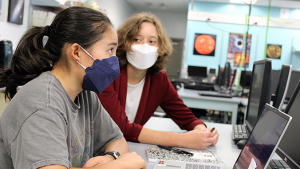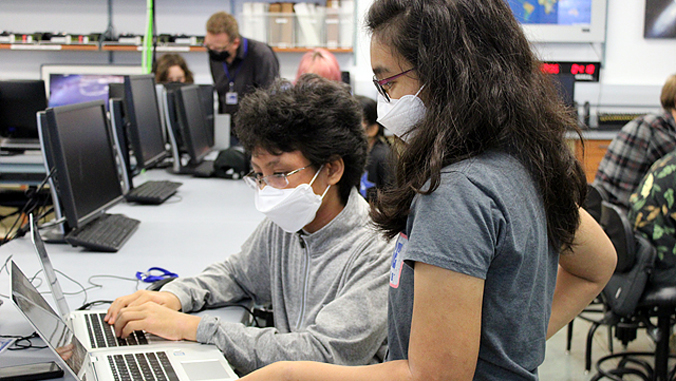Despite the challenges of the pandemic, the University of Hawaiʻi Institute for Astronomy (IfA) continues its mission to inspire new generations of scientists. From May 30 through June 3, Hawaiʻi Student/Teacher Astronomy Research or HI STAR hosted its annual summer program for middle and high school students from the Valley Isle at the UH Maui College campus.
Nine middle and high schoolers worked intensively under the supervision of UH astronomers and graduate students on projects ranging from asteroids to black holes. Along the way, the students developed skills in scientific analysis, and gained proficiency in communication and presentation.
“The goal is to give the students ʻreal world’ experiences in empirical research in astronomy,” said J.D. Armstrong, HI STAR program director. “At the conclusion of their week of learning and collaborating with their teammates, the students are expected to deliver their findings at a symposium-style presentation for their friends, family and peers.&rquo;

UH Mānoa student mentor Erica Bufanda is a doctoral student at IfA who specializes in researching comments from the farthest reaches of the solar system.
“I love sharing my experiences with the younger students,” said Bufanda. “I was in their shoes once and want to help guide them towards a successful future in science!”
Since the program’s inception in 2007, approximately 75% of HI STAR students have gone on to enter the regional science fair and win awards at state and international levels. Many have been offered scholarships to prestigious universities and some have co-authored peer-reviewed scientific papers while still in high school.
King Kekaulike High School student Giullia Porter, 17, is fascinated with stellar seismology or earthquakes on stars. The Maui teen who aspires to go into mechanical engineering is thankful for the one-on-one guidance she receives from world-class astronomers at HI STAR. Porter’s fascination with astronomy ignited when she was in the seventh grade.
“I remember the first time I put on my glasses and looked up at the sky, I was like, ‘Whoa! Okay there’s a lot of stars that’s really cool!’ And ever since then it was always interesting to me but it kind of became more fascinating once I could really see the magnitude of it,” Porter said.
This is the first time in two years HI STAR hosted the program in person. During the pandemic, students were mentored virtually on Zoom.
“Fortunately, the platform was able to keep us all connected, although we did miss the face-to-face interaction and socialization we get in person,” said Carolyn Kaichi, HI STAR manager.
This program is an example of UH Mānoa’s goal of Enhancing Student Success (PDF), one of four goals identified in the 2015–25 Strategic Plan (PDF), updated in December 2020.


